Seven Living Croatian Noble Pen Shells Discovered in Porec Waters
July the 22nd, 2022 - Croatian noble pen shells, much like pen shells which were once found in abundance across the Mediterranean, are now a dying breed. To save them from becoming extinct, a fate from which they'd never return, they are strictly protected by law in Croatia, and there are numerous initiatives underway to keep them alive.
Seven living Croatian noble pen shells have been found in the Porec waters, which is enough to give researchers, experts and carers a spring in their step.
As Lucio Lorencin/Morski writes, on July the 17th, the Porec-based Society for Underwater Activities and Sport Fishing conducted a diving search in the area of Plicina Civran. The aim of the search was to verify reports of live Croatian noble pen shells (Pinna nobilis). In addition to the Porec club, divers from Medulin clubs also participated: EKO MORE and RK "CENTAR".
The divers searched the seabed, spanning two hectares. To the great surprise and satisfaction of all participants, seven live Croatian noble pen shells were found among the many shells of dead ones, likely victims of the disease which swept the Mediterranean back in 2016, snuffing out the lives of many.
One of the pen shells found is "older", with a height of around 20 cm. The other 6 are younger, ranging from 10 to 60 mm tall. The people of Porec affectionately gave the name "Puskica" to the larger of the shells. The other small pen shells found alive in this area are located in the zone around Puskica.
Of the Croatian noble pen shells found in the Plicina Civran area, which lies just north of Porec, the smallest one is somewhat special. While all the others are anchored naturally into the sand, this one is growing attached to a small sea sponge - Spongia officinalis.
The bottom is rocky and interspersed with sandy surfaces. Puskica is surrounded by a meadow of "thin" sea fringe, comprised of a type of sea algae from the "Cymodoceaceae" family. The Medulin divers recalled that they had previously discovered the most numerous living pen shells in the meadows of a marine flowering plant called "Posidonia oceanica".
The Medulin diving association EKO MORE, at the instigation of Marinko Babic, has been involved in the search for surviving Croatian noble pen shells since back in autumn 2020.
Since then, they've found 9 live pen shells in the waters of Medulin and Pula. Under the coordination of biologist Sandro Dujmovic from the Brijuni National Park Public Institution and Silvie Buttignoni from JU "Natura Histrica", metal cages were placed around 7 of those pen shells to protect them from possible predators (octopus, crabs, sea bream, and of course, humans).
Noble pen shells were observed dying en masse in Spain back in 2016 owing to a disease, and since then it has affected the entire Mediterranean. Here in the Adriatic Sea, the first pen shell deaths were recorded in 2019. Mortality in many locations is a tragic 100%, and due to the dramatic decline in their population, the noble pen shell received the status of a critically endangered species in just one year.
It is believed that the cause of this pen shell plague is a parasite called "Haplosporidium pinnae". Sea currents and especially higher sea temperatures in the summer months favour the transfer from pericarp to pericarp.
In 2020, the occurrence of this plague affected Mediterranean countries with pen shell population mortality of up to 100%. So far, not a single effective method has been established that could prevent plague and the spread of infection.
In order to preserve the noble pen shell as of 2020, the Ministry of Economy and Sustainable Development implemented a project called ''The preservation of the pinna nobilis in the Croatian part of the Adriatic Sea''.
According to this project, the Adriatic is divided into three regions: northern, central and southern. The coordinators of the activities by region are: the Brijuni National Park Public Institution (for the northern Adriatic), the Telascica Nature Park Public Institution (for the central Adriatic) and the "More i karst" Institution (for the southern Adriatic). Everyone who notices a live pen shell is invited to remember the location and report it to the regional coordinators. It is important to note that Croatian noble pen shells should never be touched, it is enough to gently wave near it with your fingers the under water, if it is alive, the shell will close.
For more, make sure to check out our dedicated lifestyle section.
Journalist Clickbait Victim: The Curious Case of Mystery Fish on Korčula
June 2, 2021 - When TC editor Iva Tatić caught the fish nobody could identify, TCN reporter Ivor Kruljac jumped to action in the hope he will find a marine life scoop. But after the dramatic realization that Atlantic lizardfish is nothing spectacular, he became a journalist clickbait victim. Meet the mystery fish on Korčula.
It was early evening between 7 pm-8 pm on the eastern Korčula coastline on May 28. After a long week of handling the Total Croatia site, TC editor Iva Tatić decided to chill and went fishing. Instead of managing the multilingual site that brings you the best tips on how to travel and enjoy Croatia, she must've been happy with the idea she can enjoy in Croatia herself, as she was preparing two hooks – one with a squid and the other with the piece of bread. Marine life must be very humble cause instead of a squid (absolutely delicious, either fried or grilled and stuffed with swiss chard), the bread was the taken bait for the careless fish soul underneath the Adriatic surface.
Iva took the opportunity and caught its prey, but pretty soon, happiness for the catch was additionally spiced with curiosity.

the source of curiosity and happiness © Iva Tatić
„What the hell is this?“ Iva asked the local Korčula fishermen showing them her catch.
And „no idea“ was the consensus by other marine life hunters.
„Locals call it the spider“, said a local fisherman known as Pero to Iva. „It looks like Spiderman“.
Iva didn't feel that Spiderman is an accurate comparison, and as no one really knew the answer, the whole thing went online.
After Iva shared the photos of its catch on Facebook, the online jury narrowed the mystery to two possible suspects: Saurida and Atlantic lizardfish.
Still being new and wanting to gain recognition in the newsroom, I took on myself to investigate what exactly is this Aquaman-Spiderman-love-child. Perhaps it's something invasive, a threat to the lovely Adriatic, and a fantastic journalist story.
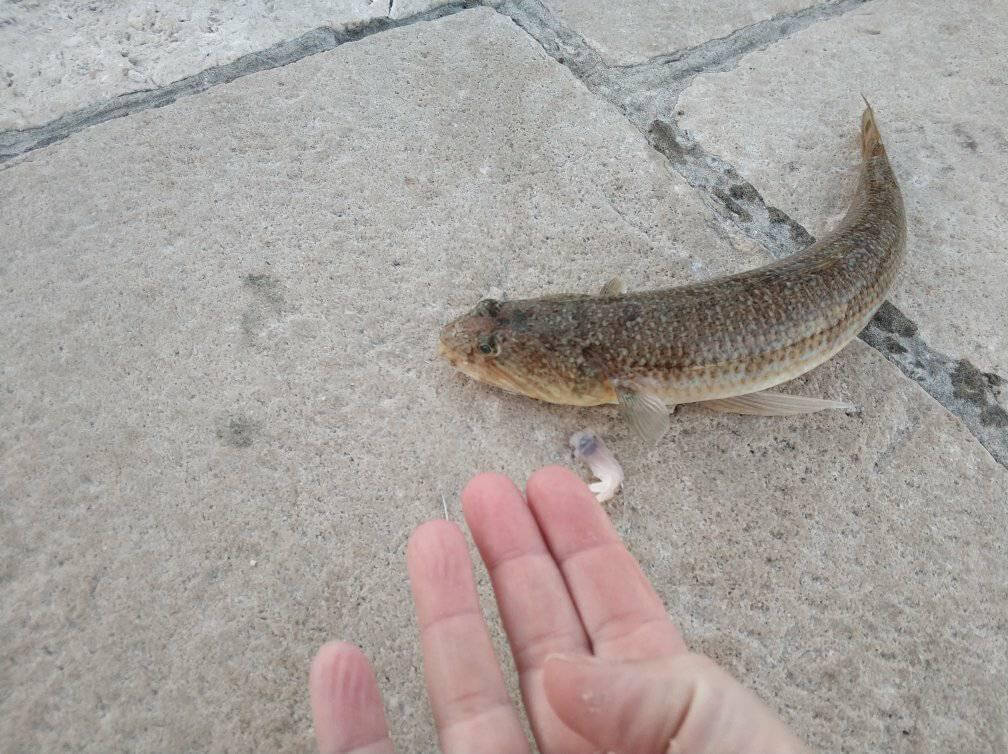
The case, the challenge, the scoop © Iva Tatić
Word on the expert street
A little bit of browsing through the pages of Rovinj Sea Research Centre (CIM), and a few calls, led me to the CIM Senior scientific associate, dr. Andrej Jaklin.
„It looks like Atlantic lizardfish, I saw that fish in person on Pelješac 15 years ago“, said Dr. Jaklin on the phone while looking at the images of the catch I sent him.
Jaklin's memory also seems fit with Pelješac being close to Korčula Island. Still, he said he can't really tell me too much about the fish and recommended it to me to contact dr. Marcelo Kovačić from the Natural History Museum Rijeka. However, dr. Kovačić, a curator for vertebrates, was on vacation, so the call was picked up by Milvana Arko-Pijevac, curator for marine invertebrates.
„I think this could be an Atlantic lizardfish, the head looks like it should, but I'm specialized for invertebrates, mollusks and shellfish“, said Silvana Arko-Pijevac.
So until that point, two experts for marine bio life are certain this is an Atlantic lizardfish (Synodus saurus). Fish, from Atlantic, I thought. Are we talking about an invasive species that manage to come to the northern dead-end of the Mediterranean all the way from the Atlantic? If so, is it hazardous to the domestic sea life of the Adriatic?
Despite recognizing the fish, neither Jaklin nor Arko-Pijevac couldn't say more details, but it's worth noting that the scientific community can once again serve as a role model to everyone who thinks they are experts on everything (both in Croatia but a trend we see spawn worldwide). Instead, my interlocutors accepted and pointed out the limits of their knowledge and suggested me someone who knows more.
Clickbait: It's not just for journalists anymore!
It took me a while to reach Dr. Jakov Dulčić from the Laboratory of Ichthyology and Coastal Fishery at the Institute of Oceanography and Fisheries in Split. First, he was not in the office, and later, he was at a meeting. But, with Arko-Pijevac's claim that Dulčić is the best ichthyologist in all of Croatia, it was worth the wait.
Finally, my mobile phone impulses from Zagreb caught dr. Dulčić in Split, and I excitedly asked him for help. To identify and say a bit more about the mysterious fish fishermen in Korčula failed to recognize, but is suspected to be the Atlantic lizardfish.
„I have to see the photos to say for certain“, said Dulčić.
„I already sent them to your e-mail before this call. Can you please refresh your E-mail?“, I asked with hearable excitement in my voice and suspense in my gut.
The suspense only grew as Dulčić was opening the e-mail.
„Found it!“, he said and I almost screamed out of excitement,
„Yes, indeed, that is the Atlantic lizardfish“, confirmed Dulčić with a relaxed voice while I was ready to ask tons of questions about this weird and possibly invasive species.
„But that is neither exciting nor anything special to catch in the Adriatic“, continued Dulčić with the same chilled tone.
I listened to that sentence with a blank expression fortunately, nobody has seen it except the walls in my apartment.
„You might think it's unusual in Croatian waters because of its name, but it's the normal fish that lives in Adriatic“, added Dulčić.
I couldn't help but think what a sour poetic justice. Being a journalist, a member of the profession in which some of my colleagues try to catch views by clickbait, to be hooked (pun intended) on a clickbait in scientific terminology.
„They can be found across the Adriatic sea, everywhere in Croatia. Their population used to be smaller in the previous years, but it recently got larger. It seems they have certain cycles, but it's nothing spectacular“, he concluded.
„But how come none of the fishermen recognized it?“, I asked puzzled.
„Interestingly enough, it is often caught, but it can rarely be seen on the fish market, and that's a place thanks to which you can usually recognize fish“, explained Dulčić.
However, informing and educating fishers and the general public about marine life in the Adriatic is something dr Dulčić and the Oceanographic Institute are very dedicated to.
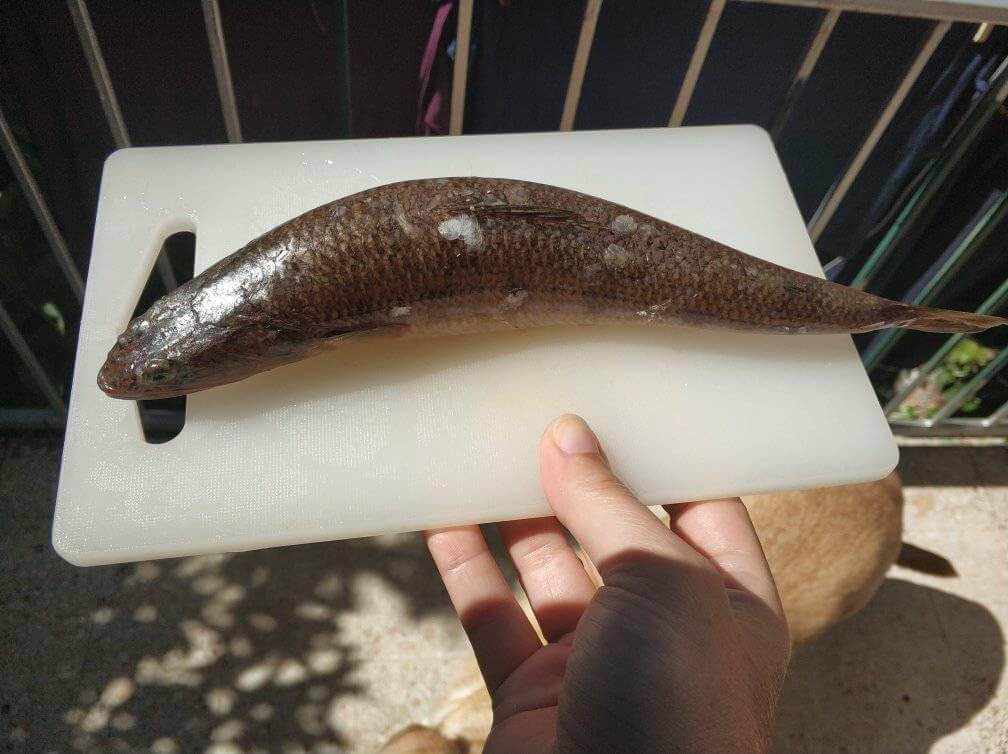
Presenting you the Atlantic lizardfish © Iva Tatić
This is evident by the LEKFishResCRO project.
„This project will address the need to improve knowledge on the trends in Adriatic fisheries with novel methods as well as to acknowledge recent changes in fish biodiversity in a complex Adriatic ecosystem. The central objective of the project will be to evaluate the potential use of the LEK in developing the knowledge base for fisheries management and conservation. The strategy employed for this evaluation will be a two-way discussion between fisherman and other stakeholders from one side and fisheries biologists from another side around the subject of what sorts of indicators of ecosystem health would make sense in light of both the LEK of the fishers and the research-based knowledge (RBK) of the fisheries biologists“, says LEKFishResCRO website, and with loads of materials, you can check yourself.
„We collaborate well with fishermen, we work on their education, and with their tips and images they sent from the field we quickly gather research data“, explained Dulčić.
The invasive species are legitimately a threat to Adriatic, and it comes from the Red Sea through Eastern Mediterranean, but these examples are excellent topics for some other articles.
In the meantime, the mystery fish is identified as a mainstream species in the Adriatic. Somewhat newsworthy (maybe?), but this time my ship returned without a scoop from the stormy cruise in the sea of information.
I sent a message to Iva explaining what she caught (which she already found out on her own, she is a good journalist after all), and I only confirmed that she can unfreeze it and eat it safely. Additionally, I found this recipe at least.
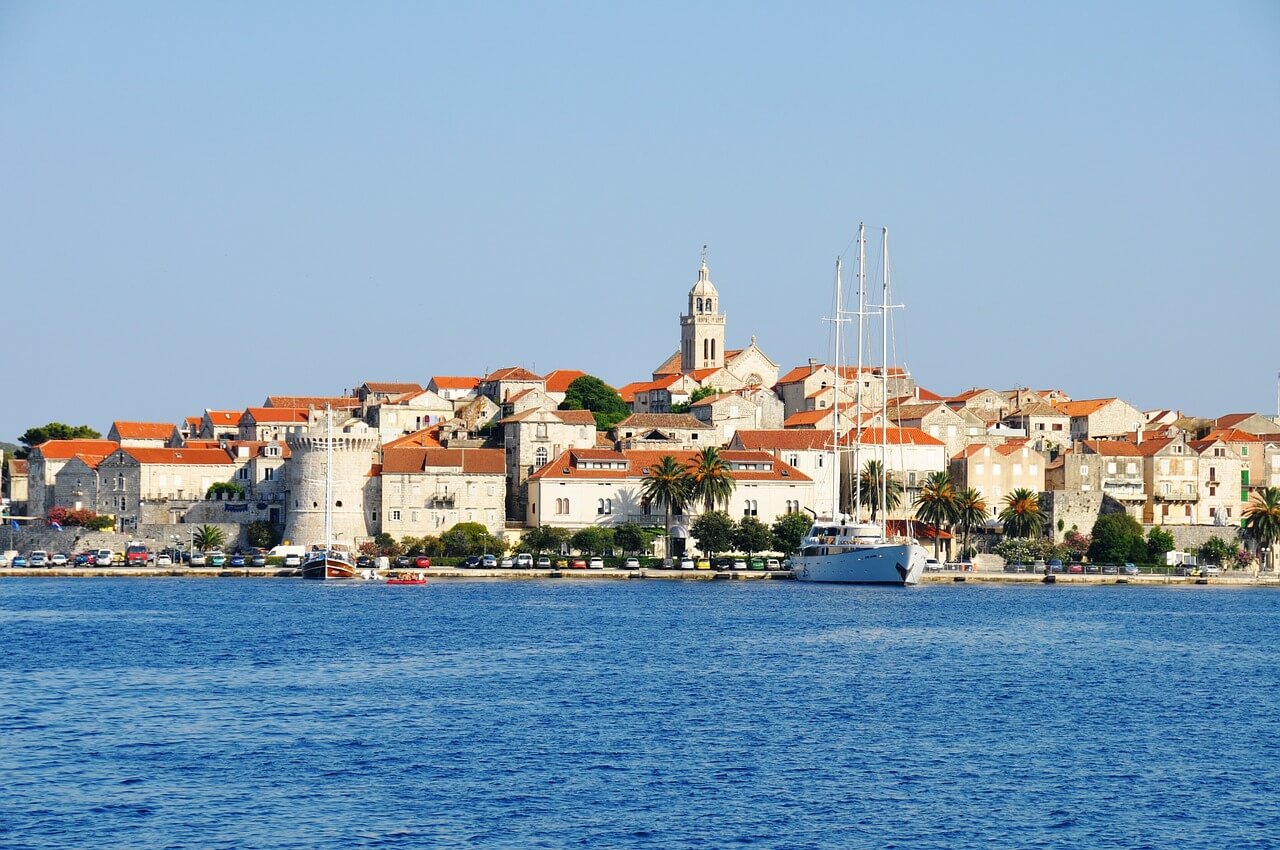
Korčula and Adriatic Sea, Pixabay
Enjoy the Adriatic, but respect marine life
In an attempt to conclude this investigative piece (let's pretend it is one, please) on a socially responsible and eco-friendly note, I asked dr Dulčić if there are any type of fish tourists and locals shouldn't fish because it's on the verge of extinction and if caught it should be returned to the sea immediately. „Such fish is living in areas and conditions where you can't catch it with hooks or nets. But Do not dive out noble pen shells (Pinna nobilis), or disturb mammals such as dolphins. And be careful around sharks and jellyfish“, concluded dr. Dulčić.
Learn more about Korčula on our TC page.
For more about science in Croatia, follow TCN's dedicated page.
Four Surviving Noble Pen Shells in Pula and Medulin Caged for Protection
April 18, 2021 - Four surviving noble pen shells in Pula and Medulin have been caged for protection.
Morski.hr reports that four noble pen shells (Pinna Nobilis), named Tara and Sara in Pula, and Mara and Pina in Medulin, have survived in the wild despite the plague that has gripped the entire Mediterranean in recent years.
Metal cages were set up to protect the surviving specimens from potential predators, which are also, unfortunately, humans. The openings on them are small enough to stop gilthead seabream, octopus, and bumpy starfish and large enough to allow seawater flow with phytoplankton and zooplankton that Pinna Nobilis feed on by filtering water.
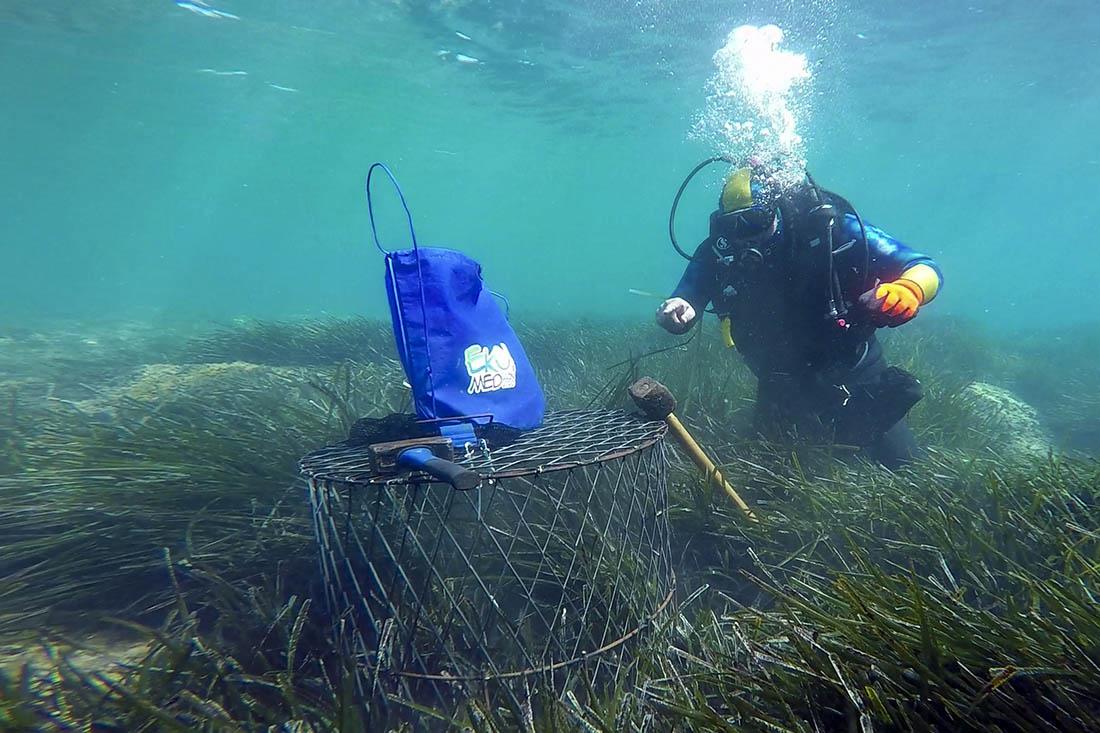
Marinko Babic
To avoid placing concrete blocks, they used a more environmentally friendly technique to drill the base with an underwater electric drill and install screws to secure the cages.
Like the previous activities of the Eko More Association, the installation of protective cages was carried out in coordination and by order of the competent institutions (Ministry of Economy and Sustainable Development - Institute for Environmental Protection, Brijuni National Park, JU Natura Histrica).
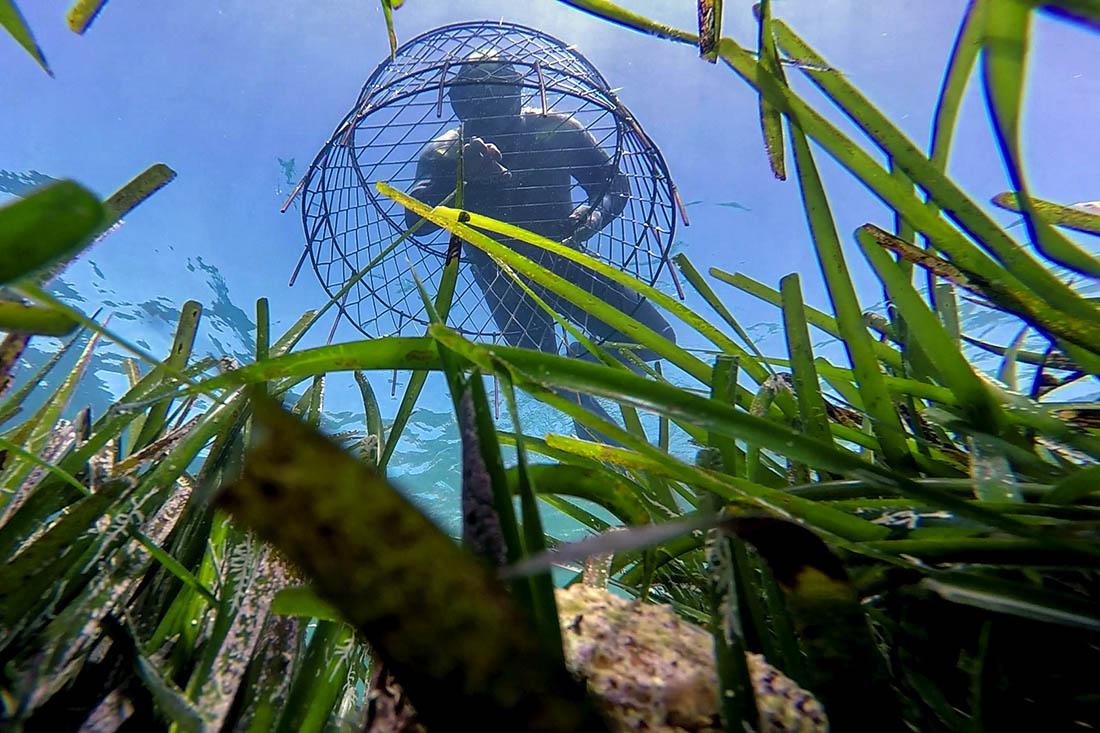
Marinko Babic
Summer is ahead of us and a critical period for Tara, Sara, Mara, and Pina, as the endoparasite Haplosporidium pinnae become active at sea temperatures above 13.5 ° C. The noble pen shells recovered nicely during the winter and grew 10-15 mm, which gives a glimmer of hope that they will successfully survive this summer as well.
Anyone who has useful information or observations can help in the search for other surviving Pinna Nobilis, which they can report to their Facebook page "Eco Sea Medulin."
In September 2020, Croatian scientists gathered at a conference aimed at expanding the Natura 2000 network. They sent out a stern warning regarding the future of the noble pen shell in the Mediterranean. The noble pen shell population has been in steep decline, and the scientists warn that, unless measures are initiated, we could lose the species forever.
For more about lifestyle in Croatia, follow TCN's dedicated page.
Pula Aquarium and Valencia Institute Cooperate for Noble Pen Shells
February the 18th, 2021 - The noble pen shell, about which much has been written over recent years as they become more and more rare to come across, has seen an institute in Valencia and the Pula Aquarium, known for rescuing marine animals, team up to protect them.
As Morski writes, the Pula Aquarium has recently announced that in the future it will cooperate with the Institute of Environment and Marine Science of the University of Valencia (Instituto de Investigacion en Medioambiente y Ciencia Marina Universidad Catolica de Valencia San Vicente Martir (IMEDMAR-UCV)), ie, with dr.sc. Jose Tenom and Ph.D. Jose Rafael Garcia-March on the preservation of the beautiful and ever illusive noble pen shell (Pinna nobilis) in strictly controlled conditions (ex situ).
The mass mortality of these strictly protected and endangered noble pen shells began over in Spain back in 2016, and this sad situation has unfortunately also been witnessed here in Croatia, with some people even removing them from the sea to take photos with them, an act that is illegal and as such punishable.
The Spanish authorities reacted quickly to the issue they noted back in 2016 and an expert and scientific community was organised to preserve the shells. In addition, back during the middle of 2019, the Pula Aquarium, entirely on its own initiative, will start working on the conservation of the last specimens of this protected shell (with the permission of the competent Ministry), once again in ex situ conditions.
The cooperation between IMEDMAR-UCV and the Pula Aquarium is important for keeping the noble pen shell alive. As stated, the Pula Aquarium is no stranger to taking care of life in the Croatian Adriatic, rescuing and rehabilitating many a loggerhead turtle. Accordingly, it will contribute in this project with diligent work and the continuous improvement of techniques and methods, while IMEDMAR-UCV has all of the specific knowledge and experience in the field of larval and juvenile noble pen shell care.
For the latest travel info, bookmark our main travel info article, which is updated daily.
Read the Croatian Travel Update in your language - now available in 24 languages.


